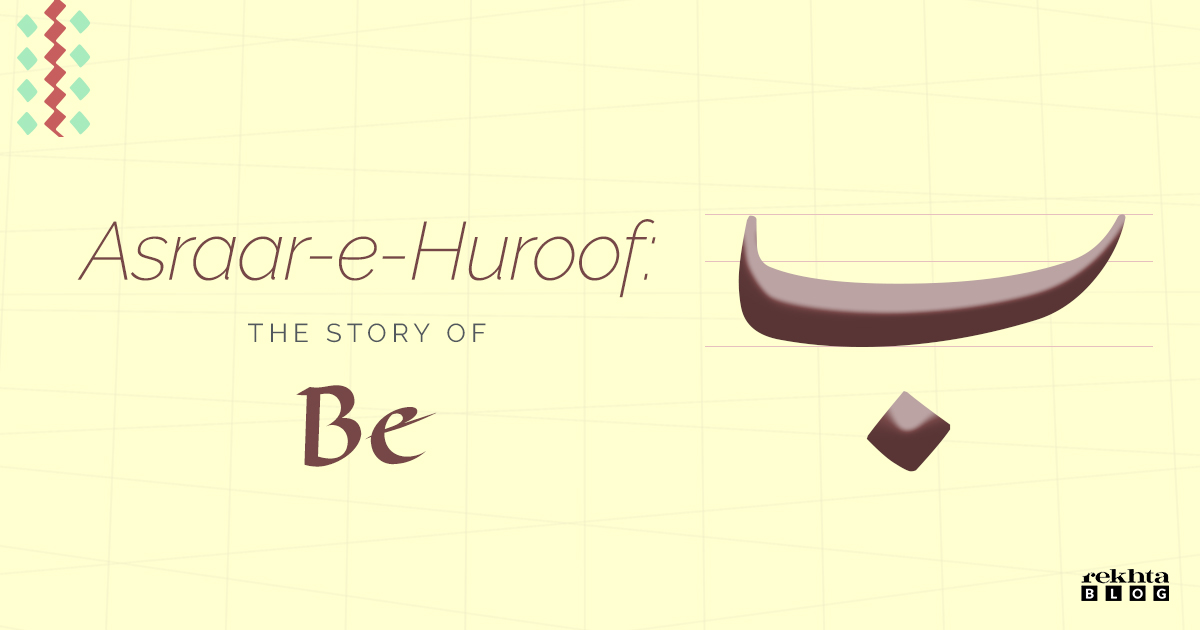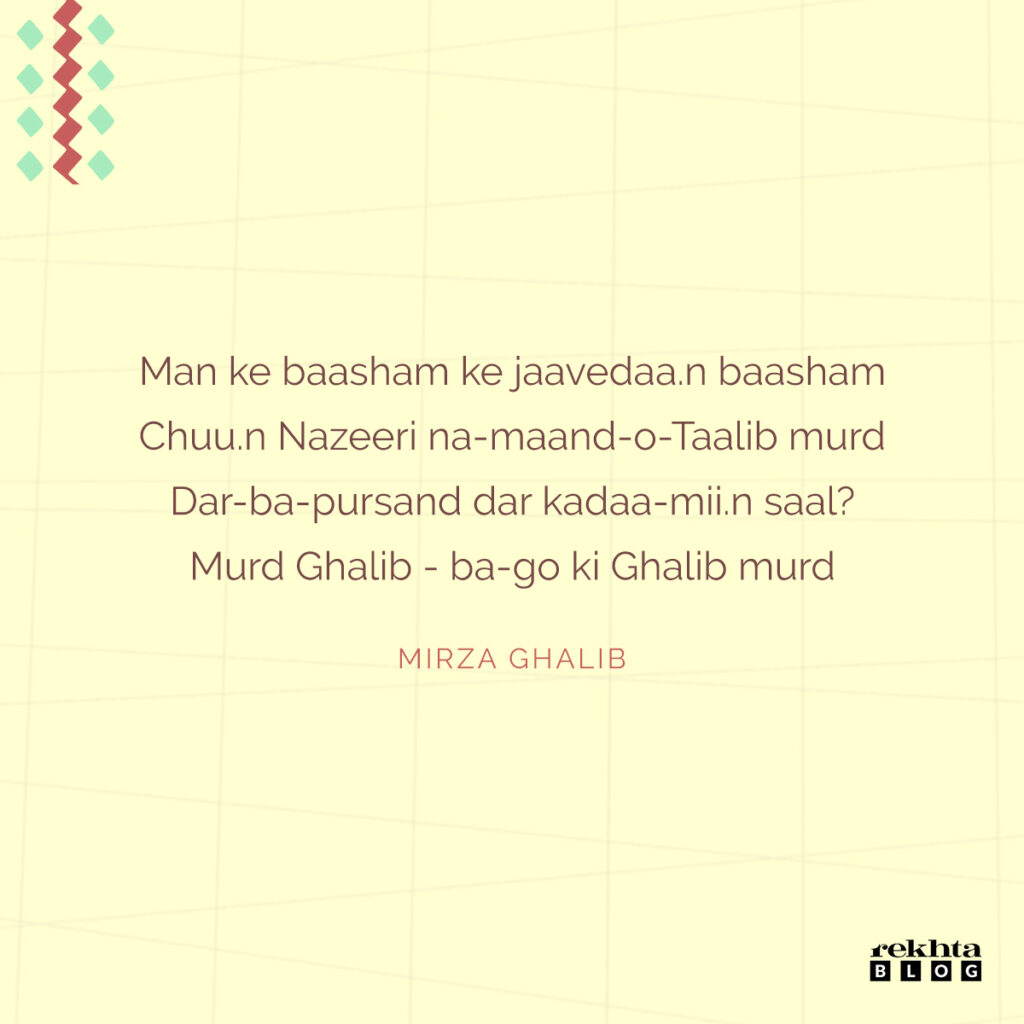
Asraar-e-Huroof- ‘Be’ Kise Kahte Hain?
Continuing our exploration of Urdu letters, we are back with another ‘unrevealed’ alphabet, ‘Be’. Written as (ب) in Urdu Rasm-ul-Khatt, and in (ब) Devanagari, it is the second letter of the Urdu alphabets (Huruf-e-Tahajji), and the twenty-third consonant of the Nagari alphabets (वर्णमाला).
The letter isn’t as layered as our first acquaintance Alif, but isn’t as straightforward as it appears, too. For starters, the letter is an abbreviated form of the month of God, which is the Arabic month of Rajab, which is the seventh month according to the Islamic calendar and ranges from February-end to March-end. That’s a good start, no?
‘Be’ is also one of the few letters, common in the both Urdu and Hindi letter system, which change their pronunciation in accordance with the letters/sounds that proceed or succeed them. These sounds, otherwise known as phonemes, have long-settled in our vocab, there are countless such words which incorporate this phonetic change, two words which you’ve long-known are ‘Zabaan’ and ‘Narmada’. The words, originally, are ‘Zafaan’ and ‘NarBadaa’. The ‘F’, in Arabic, turns into ‘B’, and the ‘B’, in Sanskrit, becomes ‘M’. Another archaic example is ‘Pad-Shah’ which mutated into ‘Baad-shah’. Long story short, the sound ‘B’ could be a part of many more words, singing an entirely different tune!
After sounds, let us now bring in some numbers! The letter ‘Be’, according to the Abjad numerical system, expresses the number 2. For the uninitiated, Abjad is the arrangement of the Arabic alphabets with each letter having a numerical value. These alphabets and the numbers which correspond to them are used in composing chronograms, or Fann-e-Taariikh.
Confused? Don’t be, let us dive into the following anecdote, and everything will be clear. Meanwhile, don’t forget the letter ‘Be’, it is the pivotal character of our story!
But an obvious question first, what is a chronogram? Well, the word literally means ‘time writing’. It’s all about writing a word that alludes to a number. With this little detail, we are good to move forward.
One poet who was very fond of composing chronograms was Mirza Ghalib. So much so that some twenty years before his death he had composed a Tarikh of his own death! The phrase was:
‘Aah Ghalib Murd’
Oh, Ghalib is dead!
Simple, isn’t it? If it doesn’t appear making much sense, this is how the math works:
Aah + Ghalib + Murd
(Alif + He) + (Ghain + Alif + Laam +Be) + (Mim + Re + Dal)
(1 + 5) + (1000 + 1 + 30 + 2) + (40 + 200 + 4)
The phrase, according to the hijri dating system, encodes to 1283 A.H. which is the year 1867 according to the Georgian calendar.
Let us not forget that Ghalib did not die in 1867, he died 2 years later. And in the meanwhile, he seldom missed out on joking about his chronogram. Ghalib was so fond of the phrase that he even versified it in the form of the following Persian couplet:

Interestingly, this is where the plot thickens! After Ghalib passed away in 1869, his pupils tried to make amends in their Ustad’s chronogram, showing what a perfectionist he was to accurately pin point his year of death. And so, enters our hero of the day, the alphabet ‘Be’. They added this letter in the chronogram, and it read:
‘Aah Ghalib Ba-Murd’
The ‘Be’ afforded them the number they were falling short of, that is 2. The Tarikh yielded the year 1285 A.H., that is 1869. Well played, you’d say, wouldn’t you?
The ‘ba’ prefixed to the word ‘Murd’, divulges another use of the letter, that of a pleonasm. That is a article that acts like a superfluous component, it does not add any meaning to the text but is just there; more like relatives in our lives! Some everyday examples of this pleonasm are ba-juz, ba-ghair, etc.
Like Alif, the formation of the letter ‘be’ too has become meaningful. Poets, as we know, explore the possibilities and give these expressions a new lease of life. Following is a tongue-in-cheek verse by Adil mansuri, see if you can touch upon the meaning:

Hope you’ve enjoyed the blog. Let your thoughts be known in the comment section, and if you’re acquainted with any other connotations of this letter, please do share. Till the next time, stay curious, stay cautious!
To read the story of Alif, check here: The Story of Alif
To read about Tarikh Nigari, check here: Abjad Numerals
NEWSLETTER
Enter your email address to follow this blog and receive notification of new posts.




